With Tools and Frameworks for Aligning Purpose and Profit at Their Disposal, How Do Agencies Actually Create Change? And What Can We Do to Support Them?

In part one of this series, Finding Common Ground for Purpose and Profit, I discussed how the 560,000+ agencies worldwide can use the U.N. Sustainable Development Goals as a framework for creating positive social and environmental change while also pursuing profit.
In part two, Designing a Better Business, I covered how organization design practices and impact measurement tools can help agencies create a culture of continuous improvement around impact measurement.
For this third and final post in the Agencies of Change series, we will explore how agencies turn theory into practice when building purpose-driven, for-profit companies.
To prepare for this post, I reached out to dozens of agency owners through Slack groups, social media platforms, email and closed social networks like the B Hive, B Lab’s platform created for Certified B Corporations. In these queries, I requested participation in a short survey about agency impact measurement practices. Fourteen agencies responded, so this is by no means a comprehensive report. However, some valuable insights can be gleaned from their answers, which are reflected in the stats and stories below.
Mightybytes is part of the community of businesses that have used a third-party verification of their impact. Use the free B Impact Assessment to evaluate your company’s impact on all stakeholders, including the environment, your workers, your community and your customers.
How Agencies Create Change
Unsurprisingly, agencies get creative when it comes to incorporating philanthropy and changemaking efforts into their work. Many agencies reported giving in-kind donations of websites, videos, branding and other creative services to cash-strapped nonprofits. Some give a percentage of every project fee back to community-based nonprofits while several mentioned being 1% for the Planet members. Other agencies create free tools and resources to help different causes. Several digital agencies mentioned the importance of creating accessible websites to help people with disabilities while others touted the value of strategic partnerships.
The majority of respondents said they use impact measurement tools for continuous improvement, while many also noted that they actively search out mission-aligned clients, baking purpose directly into their business model and ability to create profit.
Advice for Companies Shifting Toward Purpose
If you’re thinking about starting an agency or looking to put positive social and environmental impact at the heart of your existing company (regardless of whether you’re an agency), the practices below, culled from survey responses, can help you get started.
Think Big, Start Small
Transforming your company doesn’t happen overnight. It’s an ongoing process that requires intentionality in all your business practices. This can seem overwhelming, but it doesn’t have to be. Many agencies mentioned doing pro bono projects as part of their purpose-driven work. Properly managed, a small pro bono project could be a great way to jump-start changemaking efforts at your company.
“Like writing your book or getting on that treadmill for the first time, there might never seem to be a good time to commit to a pro bono project,” says Andrew Boardman of Manoverboard. “However, to support your community and build an impact-focused team, a pro bono engagement is disproportionately beneficial. And like all projects, do it within your own resource constraints.”
Pro bono programs from agencies surveyed include:
- Prosper Strategies offers an annual Changemaker Marketing Grant with scholarships to its Nonprofit Marketing Mastermind program.
- Manoverboard’s annual Purpose Project provides up to $15,000 in pro bono design services to a worthy nonprofit or social enterprise.
- The name of LimeRed’s pro bono program says it all: LimeRed’s Super Awesome Website Giveaway for Asskicking Changemakers 2019, Yeah!
- ThinkShout in Portland, Oregon, runs an annual campaign that provides valuable intern experience plus the chance to work with a local nonprofit.
Several other partnership-related pro bono programs are mentioned in that section below.
Know your Purpose
What do you stand for? Who does your company serve? How do you communicate your message to drive mission, culture, operations and so on? These things are critical to the long-term success of any company, but they’re especially important if you’re a mission-driven company. With this in mind, Chicago’s LimeRed created the book Branding for Changemakers to help social enterprises better communicate their purpose.

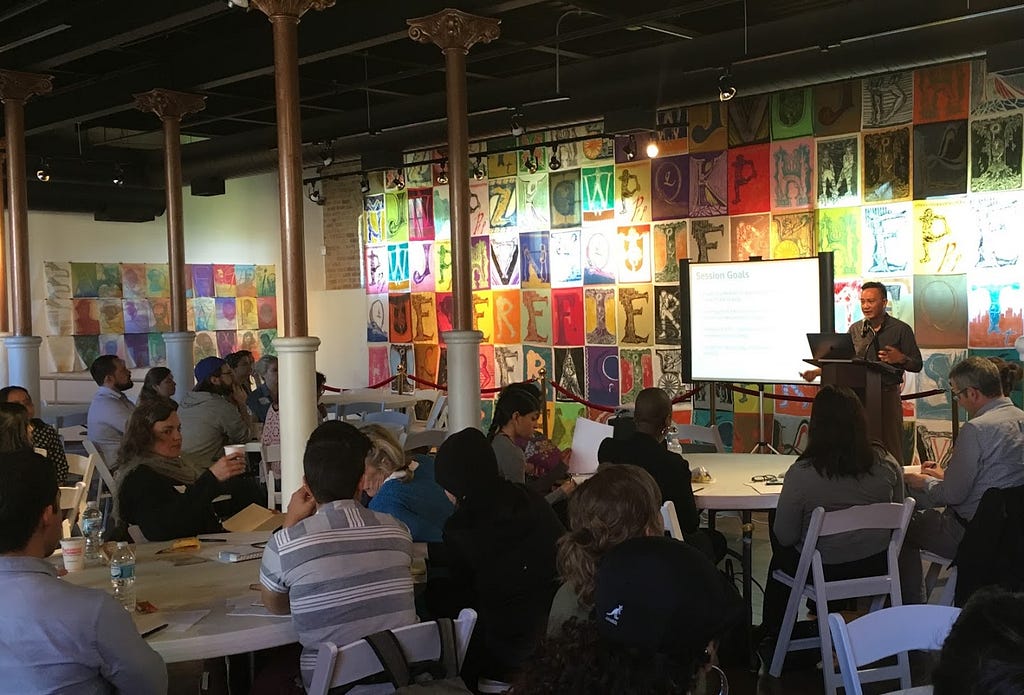
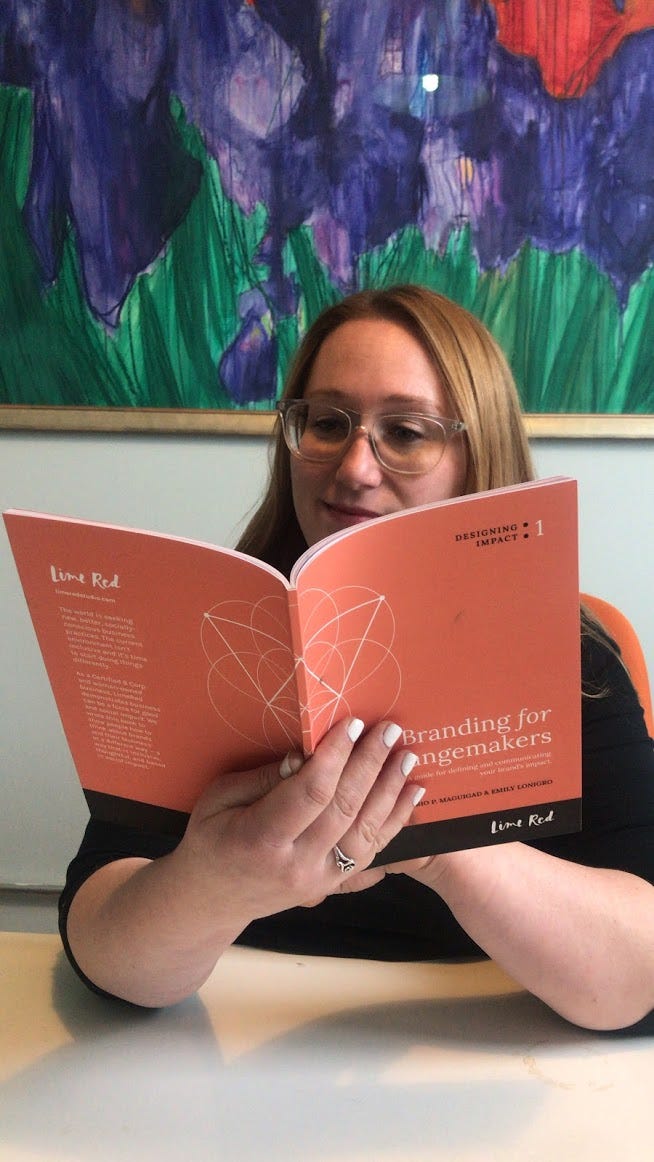
“As someone operating in the social impact branding space, the stakes are even higher than someone looking to make a quick dollar,” notes the LimeRed website. “Branding is an essential factor to communicating your purpose and powering your mission. The time you dedicate to crafting your brand should be intentional.”
Create Value
How do you create value for all your organization’s stakeholders (including, but not limited to, your customers)? This value isn’t always monetary in nature. Value creation can take many forms, so explore what’s important to you, then execute based on your available means.
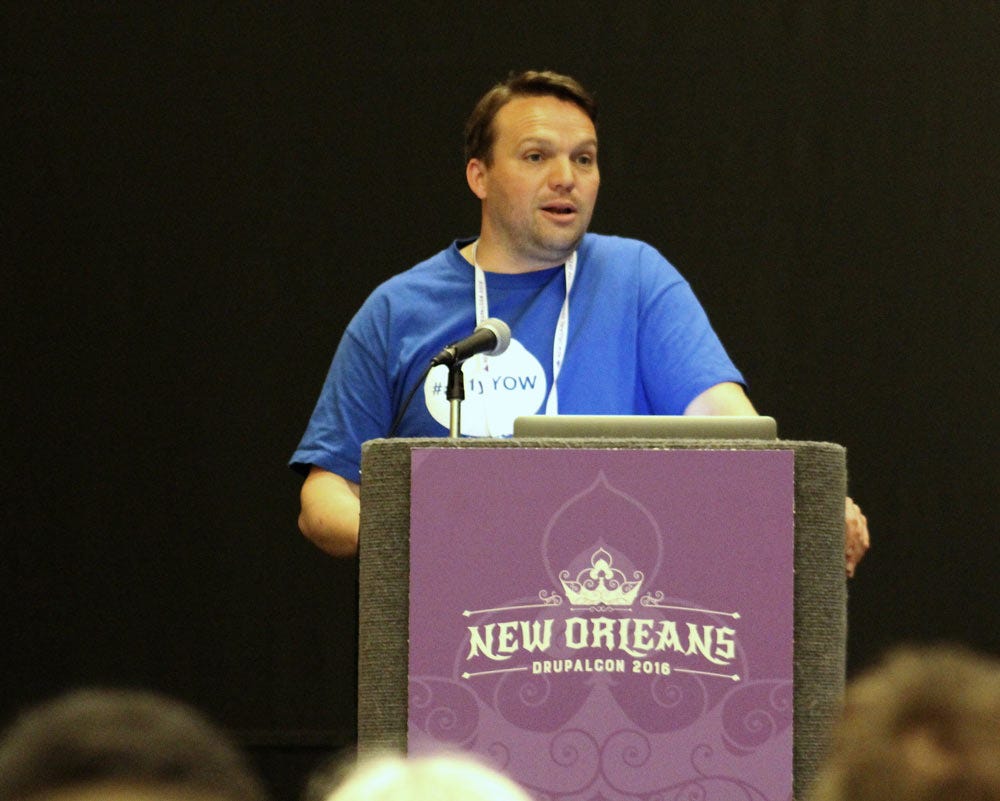
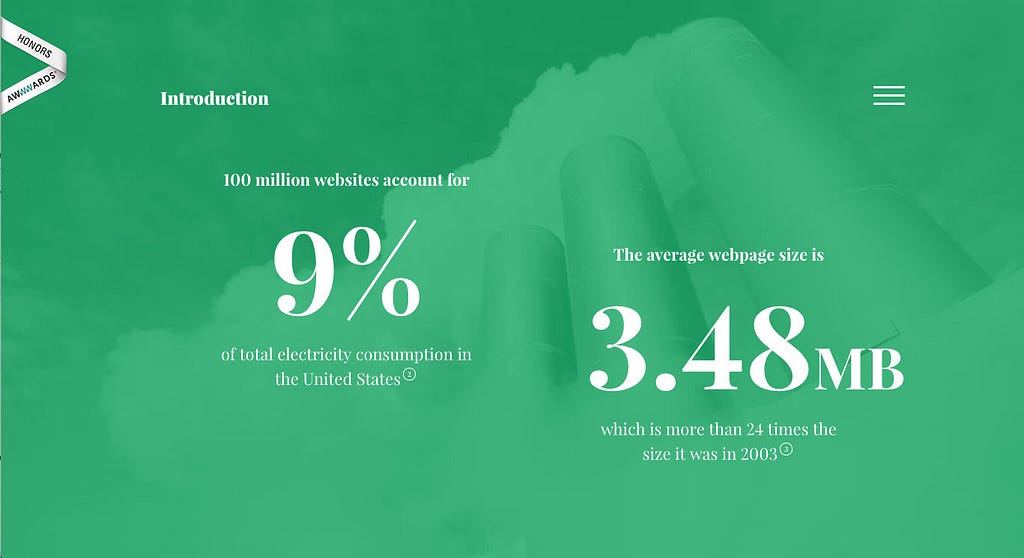
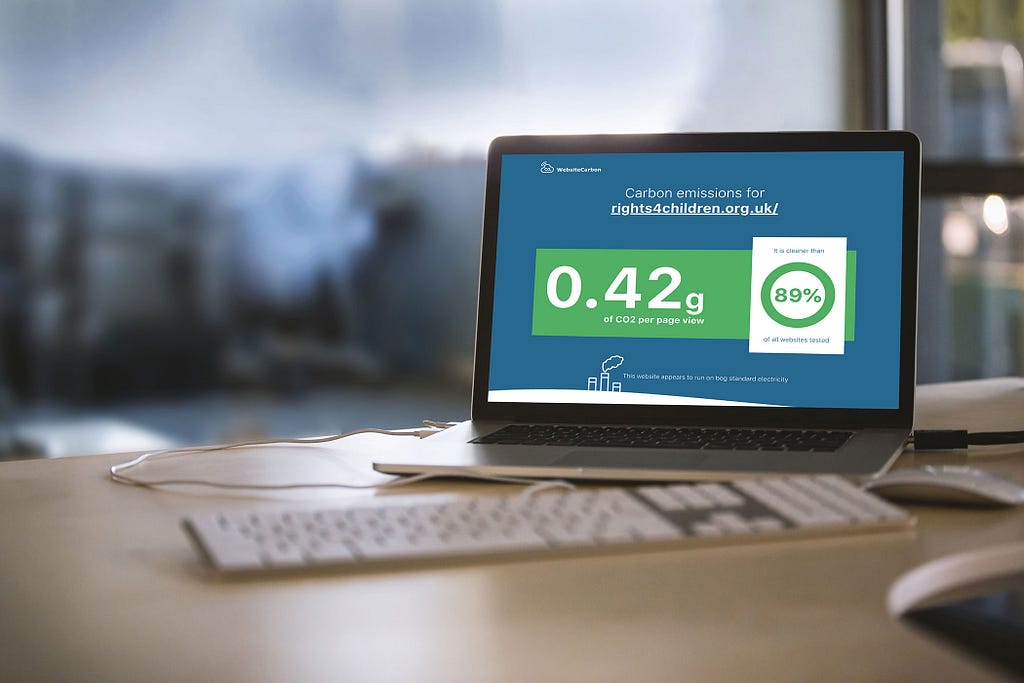
When companies use impact measurement tools, they often identify new ways to create value for workers, community, customers, the environment and other stakeholders, as these examples show:
- Wholegrain Digital created a website carbon calculator to raise awareness of internet sustainability issues and drive down carbon emissions in its sector.
- Ottawa’s OpenConcept spearheads accessibility efforts on the Drupal content management system, which is critical for organizations using that system to better serve people with disabilities.
- Exygy created DAHLIA, San Francisco’s Affordable Housing Web Portal.
- Winnipeg’s Manoverboard designed the award-winning Serving.Green to help people better understand the importance of moving their website to a green web host.
Communicate Expectations
A company can only do what its resources allow. This is especially true for agencies, where margins might be tight on some projects or cash flow erratic at times. Your team will get excited about this shift toward more purposeful practices. Aspirations are critical, and should be matched with good company governance practices. It’s important to make expectations clear about what your company’s resources can support alongside your vision for the future.
The recipe for success here: Stay within your means. Communicate how that will happen. Then empower your team members to do their best work.
Measure Impact, Benchmark Performance
The importance of benchmarking was underscored by all participants. If you’re starting down this path, it is critical to measure what matters and benchmark company performance not only against your previous efforts but in comparison to others as well. This helps you identify areas to improve over time.
Of the agencies that responded, 86 percent used the B Impact Assessment to measure and benchmark environmental, social and governance (ESG) reporting.
OpenConcept mentioned using Carbon 613, a Canadian network of organizations that set greenhouse gas reduction targets in Ottawa. Boulder’s Apiary Studio creates self-imposed metrics related to water, carbon offsets, and philanthropic/volunteer contributions to local issues.
In addition to operating as B Corps, some agencies, like NetRaising in Portland, Oregon, and my own agency, Mightybytes, became public benefit corporations as well, creating annual impact reports alongside financial reports every year.


Boise’s Oliver Russell was the only agency that mentioned using the U.N. Sustainable Development Goals.
“The SDGs give you a simple, actionable framework that helps you focus your impact locally and regionally,” says Founder and President Russ Stoddard, “while tying yourself into a global effort that positively affects the entire planet.”
In 2018, Oliver Russell doubled down on SDG 5, Gender Equality, which guides the agency’s hiring and organizational development practices as well as volunteering, pro bono work and donations. This year, the agency is expanding that to include three more SDGs:
- SDG 10, Reduced Inequality
- SDG 11, Sustainable Cities and Communities
- SDG 17, Partnerships to Achieve the SDGs
Community, Partnerships and Interdependence
Partnering with other businesses or nonprofits whose efforts complement your own can be a fruitful and mutually beneficial way to create change while also expanding brand awareness. Several agencies mentioned that this was an important part of their efforts.
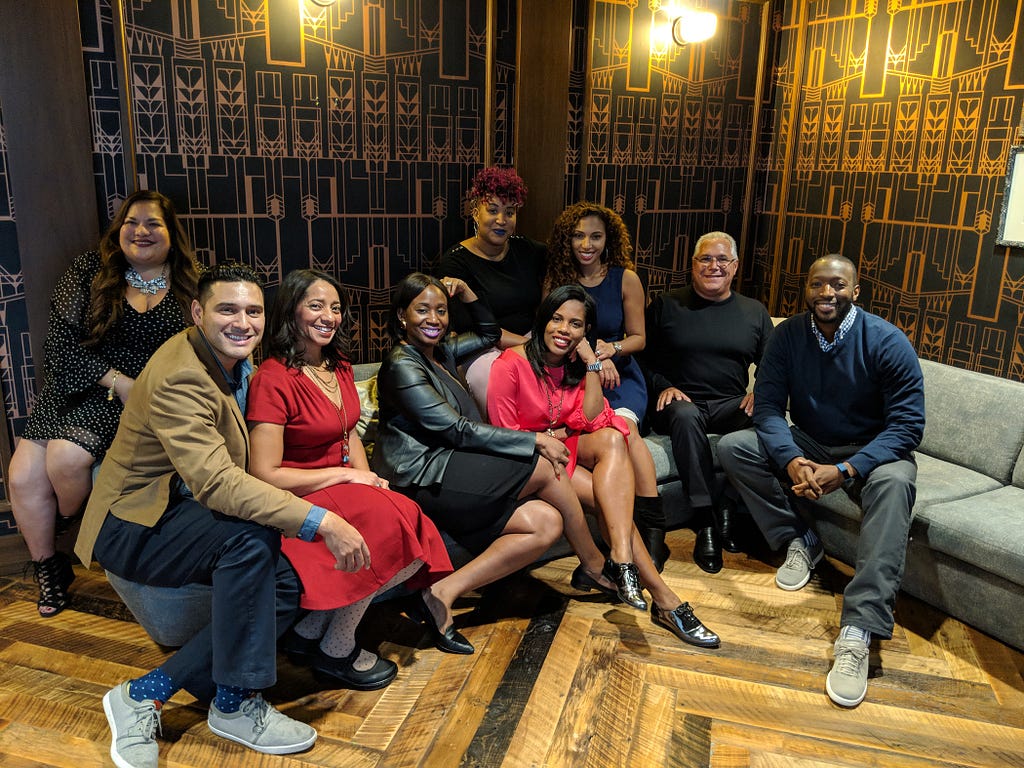
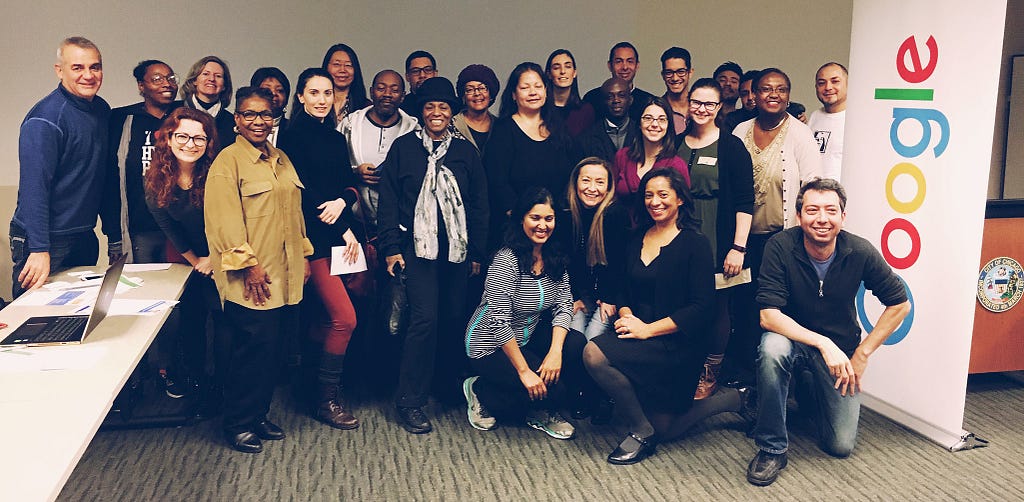
Some agencies use existing programs to broaden their reach. Chicago agency Birk Creative partners with the Accelerate With Google program to help underrepresented and marginalized businesses succeed online. Agency CEO and managing partner JinJa Birkenbeuel is also one of the Founding Forty women who launched DePaul University’s Women in Entrepreneurship Institute, which supports women entrepreneurs through academic research and programs as well as initiatives that invest in the success and sustainability of women-owned businesses.
Several respondents mentioned that they collaborate with other service providers on philanthropic and changemaking efforts. For example, Chicago Cause, a partnership between Orbit Media and several other local agencies, has generated nearly $400,000 in pro-bono services over the past seven years. Similarly, Hemmings House’s Million Dollar Pledge partnership with the United Way of Greater Saint John and nine other organizations will result in $100,000 of pro-bono services annually for 10 years.

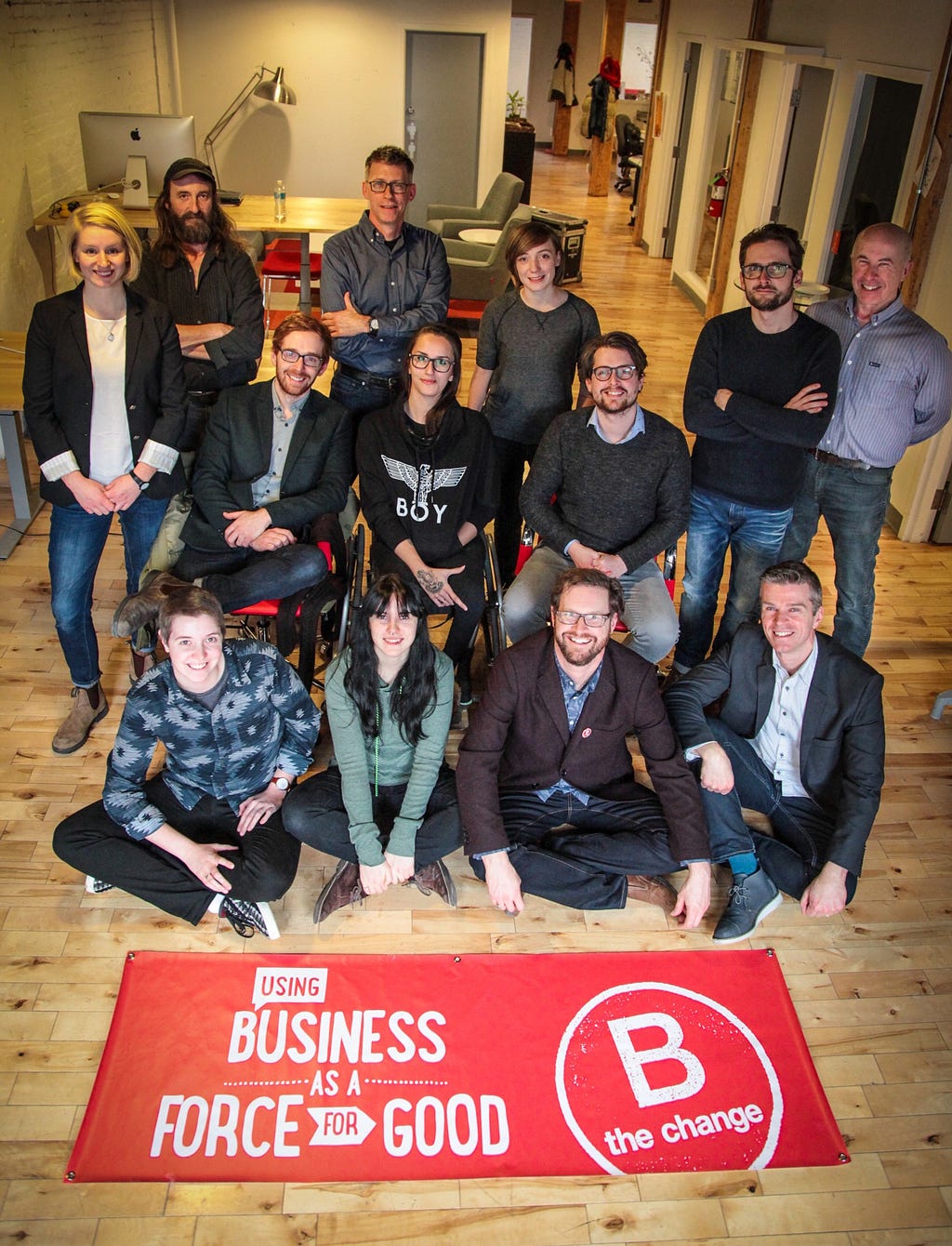
“When we partner with other service providers and the referral for a client comes from a third party, it’s trusted more,” says LimeRed’s Emily Lonigro. “It gives us a clear head start in the sales/vetting process. We look out for each other because we have that same basis of friendship and mutual admiration, but we’re also able to refer business to each other.”
Similarly, other agencies turn to their clients to generate long-term, mutually beneficial relationships. Boardman of Manoverboard notes that his relationship with HeartShare Human Services of New York has existed since he started the agency.
“HeartShare is a truly incredible organization serving over 35,000 children, adults and families with developmental disabilities per year,” Boardman says. “They started working with me in 2004 when I lived a few miles away in Brooklyn. As one of my most significant clients, my goal was to take care of anything and everything they needed when it came to digital strategy, design and development. We are still working together 15 years later.”
Embrace Failure
You might make mistakes on this journey, and that’s OK. Failing is a natural part of business. Knowing this going in will help you identify “safe-to-try” experiments that can move efforts forward without putting your resources at unnecessary risk. Zach Berke, from San Francisco agency Exygy, says there are many lessons impact-driven companies and agencies can learn from modern product design practices.
“You’ve got to use language thoughtfully to move impact-driven organizations to take risks and embrace innovation,” Berke says. “Phrases like ‘fail fast’ can scare folks, whereas terms like ‘pilot’, ‘iteration’, ‘efficiency’ and ‘learning’ are examples of terminology that allow folks to be more comfortable with taking a modern approach to product development cycles.”

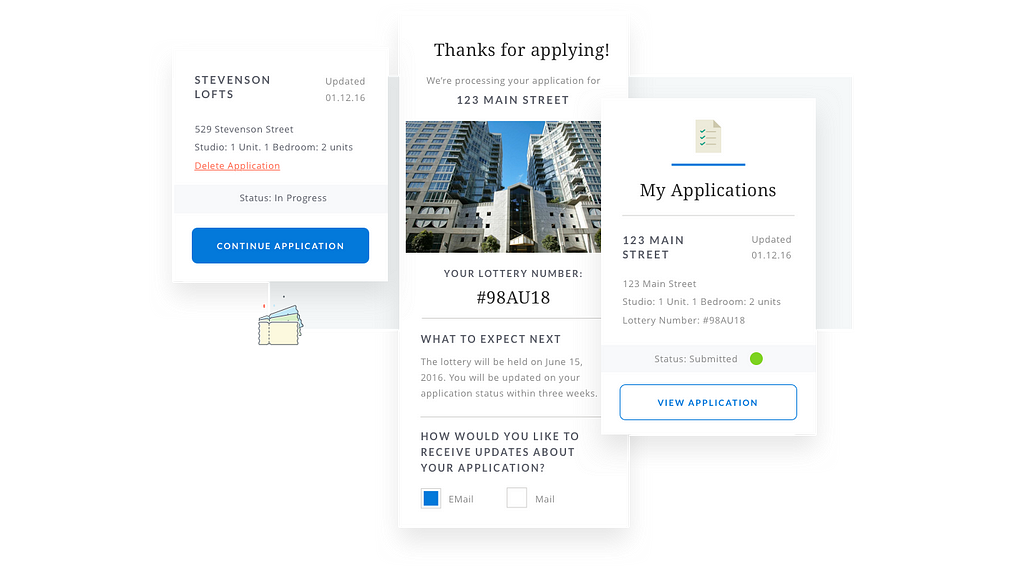
“When folks are invited to provide feedback into the product design and development process,” Berke says, “everyone feels less threatened that the ‘final product’ will have been created without their input and we turn project hurdles into project champions. In this way, embracing failure reduces project threats and significantly increases the likelihood of a product’s success.”
The same can be said about a company’s efforts to create positive social and environmental change. The process should be collaborative and iterative based on small cycles that provide continuous feedback and learning. That way, if failure seems imminent, you know well enough in advance that you can do something about it to minimize risk.
Challenges to a Purposeful Migration
Only one agency mentioned that it struggles to fully incorporate these efforts into its entire business. Adrian Gershom, director of digital strategy and business development at c|change, a Chicago creative agency, says his company struggles to find the ROI in something like becoming a B Corp.
“For consumer product companies, the path is clear,” Gershom says. “Customers increasingly support companies making a difference over those that don’t by spending money on their products.” They vote with their dollars.
“If you’re a B-to-B company, the incentives are less clear,” he says, noting that purchasing decisions are often driven by cost, existing relationships, the dreaded RFP or a number of other factors that may or may not take a potential vendor’s ESG initiatives into consideration.
“If you’re a service-based B-to-B company, like an agency,” Gershom says, “the challenge is greater still. Not only are you always hustling to keep the pipeline flush, but you’re often talking to companies that won’t care whether you pay your employees a living wage or support nonprofit organizations, especially if it impacts your pricing to them. They want their project done quickly, efficiently, and under budget, no matter what.”


Instead, c|change uses cause-driven work as an opportunity to push the creative envelope while also showcasing new capabilities. For the 2018 holiday season, the agency created a book and augmented reality project highlighting the impacts of climate change.
Support Your Local Agency
I opened this series with a story about apathy to changemaking efforts in the agency world and noted that over 560,000 agencies exist. Agencies are a growing part of our global economy.
As an agency owner, I can qualify that this work is sometimes challenging and difficult. You can fall into the trap of thinking no one cares. Yet this work is also critically important, for all the reasons shared in this series.
In the B Corp community, working with other B Corps is an important part of how we build shared prosperity.
The most impactful thing you can do is to hire agencies that have committed to creating positive social and environmental change.
Provide referrals to them, attend their events or otherwise support their efforts. The agencies mentioned in this series are a good start, but there are many more. Not sure if an agency you are vetting is committed to impact work? Search its website. If the agency puts effort into creating change, it also will put effort into telling that story. To find B Corp agencies, search them out on B Lab’s website and show them some love!
B the Change gathers and shares the voices from within the movement of people using business as a force for good and the community of Certified B Corporations. The opinions expressed do not necessarily reflect those of the nonprofit B Lab.
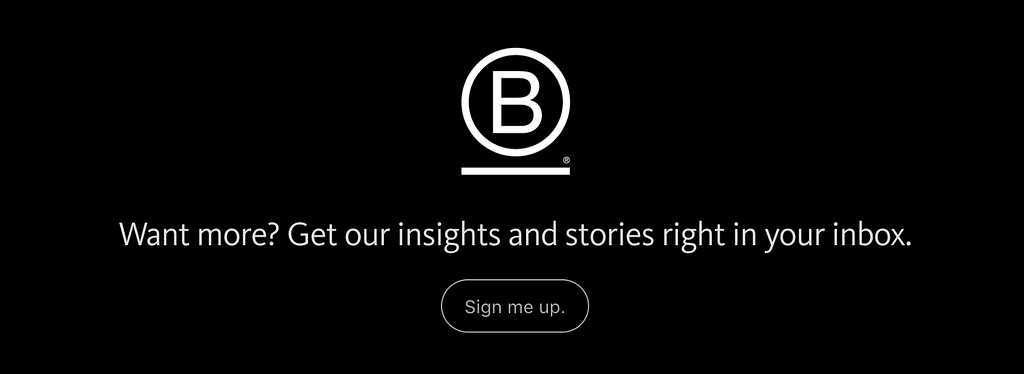
Agencies of Change: Theory Into Practice was originally published in B the Change on Medium, where people are continuing the conversation by highlighting and responding to this story.
Source: B the Change
